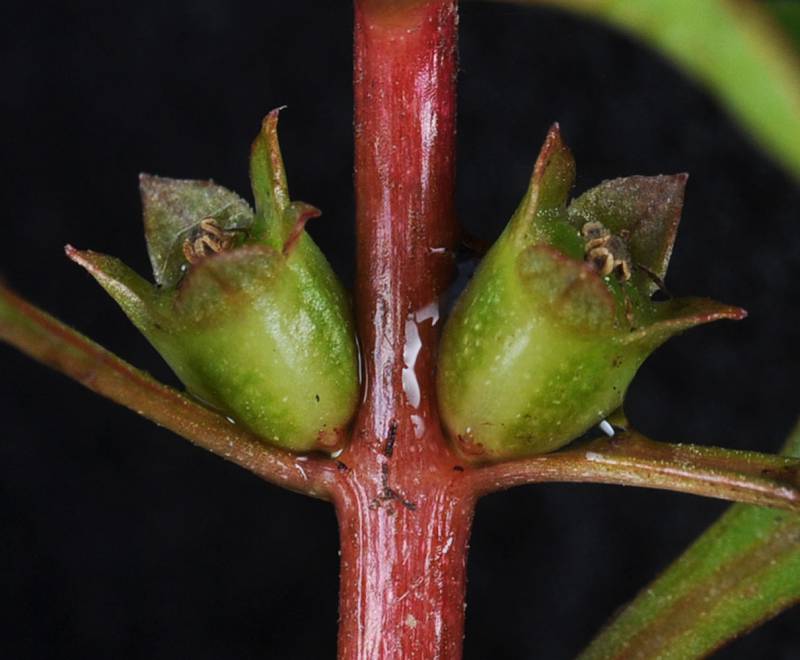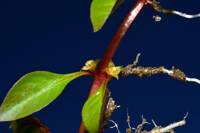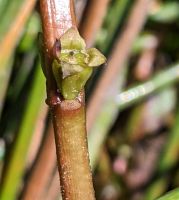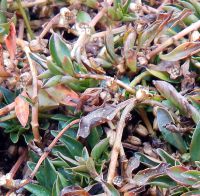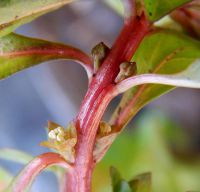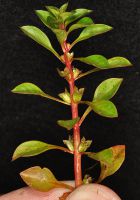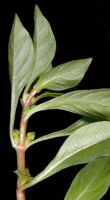Distribution: Occurring west of the Cascades crest and along the Columbia River in Washington; southern British Columbia to California, east to Idaho, east across the southwestern U.S. and southern Great Plains to eastern North America; also occurring in New World Tropics and Eurasia.
Habitat: Lakes, marshes, peatlands, shores, and wet meadows.
Flowers: July-September
Origin: Native
Growth Duration: Perennial
Conservation Status: Not of concern
Glabrous, succulent perennial, the stems prostrate, rooting at the nodes. Leaves: Leaves opposite, entire, 2-6 cm. long, the blades ovate-elliptic to obovate, tapered gradually to broad petioles nearly as long.
Leaves opposite, entire, 2-6 cm. long, the blades ovate-elliptic to obovate, tapered gradually to broad petioles nearly as long.
Flowers sessile in the upper leaf axils, greenish, 2 mm. long; sepals 4, ovate, persistent in fruit; petals lacking; stamens 4, opposite the sepals, the filaments very short; stigma capitate; ovary inferior, 4-celled.
Capsule top-shaped, 2.5-4 mm. long, with 2 tiny, lateral bracteoles about half as long.
Publication: Sketch Bot. S. Carolina 1(3): 211. 1817.
Ludwigia palustris (L.) Elliott var. pacifica Fernald & Griscom [HC]
PNW Herbaria: Specimen records of Ludwigia palustris in the Consortium of Pacific Northwest Herbaria database
WA Flora Checklist: Ludwigia palustris checklist entry
OregonFlora: Ludwigia palustris information
E-Flora BC: Ludwigia palustris atlas page
CalPhotos: Ludwigia palustris photos



